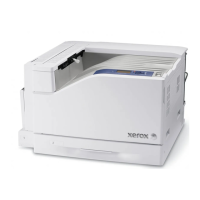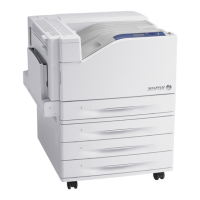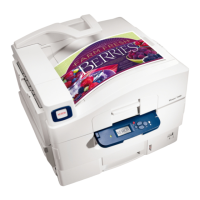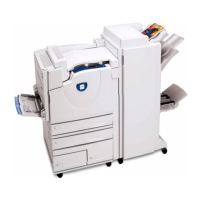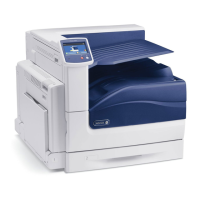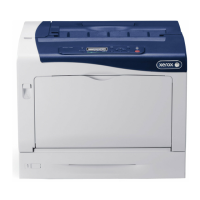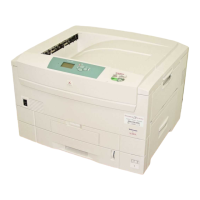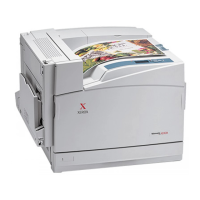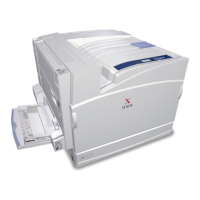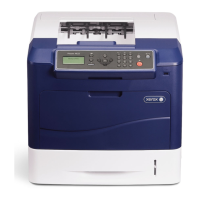Phaser 7500 Printer Service Manual 4-19
General Troubleshooting
Intermittent Problems
This is not an exact procedure, but a set of recommended actions that use the
resources of the service manual to help locate the cause of an intermittent
problem.
1. Check the error logs. Recent service actions may provide information about
the problem. For example, a component that was recently replaced to correct
another problem may cause the new intermittent problem.
2. Run the printer in a mode that exercises the suspect function. The printer may
fail more frequently or may fail completely under these conditions. Look for
signs of failure or abnormal operation. An intermittent problem is usually
associated with a fault code, a jam code, or some other observable symptom.
3. Using the troubleshooting procedure associated with the symptom of the
intermittent problem, examine all applicable parts. Look for:
• contamination, such as a feed roller that has a build up of dirt or toner
• wear, such as gear teeth that are rounded or have excessive backlash
• HFSI, even if they are not near or have not exceeded life values
• chafing wires, especially against moving components
• misaligned, misadjusted, or incorrectly installed components
• slow or slipping clutches; slow or binding solenoids
• damaged components
• excessive heat, or symptoms of excessive heat, such as the discoloration
of a component
• loose cables or wires
• packing materials not removed
4. Using the troubleshooting procedure associated with symptoms of the
intermittent problem, perform all adjustments related to the applicable parts
listed in the troubleshooting table. Verify adjustments can be made, there is
an adequate range of adjustment, and the adjustment is set at or near the
nominal value. Any abnormality observed may indicate the cause of the
problem. For example, a component is adjusted to the nominal value, but it is
at the limit of the adjustment range. This is not normal and may indicate of
the cause of the problem.
5. Using Service Diagnostics, operate all applicable parts listed in the
troubleshooting table associated with the intermittent problem. Observe the
components for any symptoms of abnormal operation, such as a hesitation, or
an unusual sound.
6. Check that the AC and DC power are within specification (refer to “Electrical
Specifications” on page 1-13).
7. Get technical advice or assistance when it is appropriate. This will depend
upon the situation and the established local procedures.
8. Examine the defective parts associated with the failing function. Refer to the
parts list and wiring diagrams to determine part interactions.
9. Perform any adjustments available for the related parts. As with the applicable
parts, adjustments should fall within normal tolerances.
10. Operate all of the components that are not in the RAP, but are associated with
the function that is failing with in Diagnostics, refer to the BSDs. Observe the
components for any symptoms of abnormal operation, such as a hesitation, or
an unusual sound.
